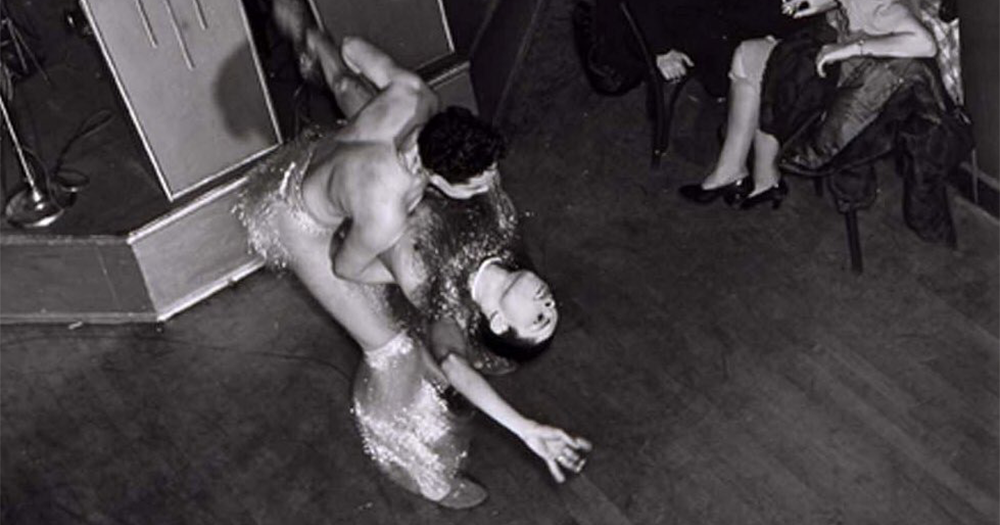Drag has been making headlines recently, no thanks in part to Republican lawmakers in the United States who have begun legal crusades against this “new woke phenomenon”. However, despite this claim, performers and shows have been around for centuries, with the Harlem drag balls being one of New York’s biggest social events in the 1920s.
The NYC neighbourhood was known as the Black cultural mecca from the 1910s to the ’30s and is where the Harlem Renaissance was born. The Harlem Renaissance is the golden age of African American cultural growth, particularly in literature, music, art and even drag.
Initially organised by heterosexual men in African American fraternal organisations, drag balls in Harlem can be traced back to the late 19th century and offered people an opportunity to appear publicly in drag. It was not until the early 1920s that drag balls became more closely associated with the LGBTQ+ community and gained further public visibility.
The epicentre of the birth of the Harlem drag ball was Rockland Palace which held the annual Hamilton Lodge ‘Odd Fellows’ ball, first beginning in the 1860s. In the early 20th century, it drew in not only members of the queer community but also artists, musicians and members of Harlem’s upper classes.
Harlem, Manhattan (1920s-1930s). The Rockland Palace was a ballroom on 155th Street where the Hamilton Lodge No. 710 would hold annual drag balls and other events for Harlem's LGBT community. Their balls would attract thousands of people from all races. pic.twitter.com/s8ma9O8lNi
— SOLAECLIPSE®️ (@DrinkSolaPop) April 22, 2020
Writers like Charles Henri Ford and Parker Tyler were frequent patrons of Harlem’s drag balls and they co-authored a novel, The Young and Evil, that detailed their experiences at these events.
The atmosphere of the Harlem Renaissance and the more relaxed social mores of the prohibition-era 1920s gave space for queerness to be publicly displayed. Despite laws against dressing like the opposite sex, it was said that drag queens walked around openly.
Although these balls did not restrict white people from performing or attending, they were invariably tied to the Black and Brown communities of the city. Iconic Black artists like Gladys Bentley, an openly lesbian blues singer and gay writer Richard Bruce Nugent found creative freedom in the Harlem renaissance and drag scene.
https://twitter.com/olderthaneve/status/1365029226814955520
Unfortunately, like most things, despite essentially being pivotal in the Black cultural community, the competitions had a white and eurocentric bias. It wasn’t until 1936, more than 70 years after the first reported ball, that Black queen Jean La Marr won the Hamilton Lodge Ball in front of 8,000 audience members.
The Lodge held its last ball in 1937, just a year after La Marr’s win, following the election of a new New York district attorney primarily concerned with ending the ball scene.
Despite the venue’s closure, the drawing end of the Harlem Renaissance did not mean a stop to the drag ball; instead, the events continued and eventually evolved into the more famous house ballroom scene. These types of balls emerged in the 1960s and early ’70s after the creation of the house of LaBeija. If you’ve watched the TV show Pose or seen the 1990’s film Paris is Burning, you’ll know what we’re talking about.
During this era of the ballroom community, houses acted as “family” teams that competed against each other. This family structure, with the head of the house acting as a mother or father figure, fostered creativity and provided community and support for Black and Brown LGBTQ+ individuals.
Drag has been a prevalent art form and safe space for LGBTQ+ individuals for decades. Shows like RuPaul’s Drag Race and even drag brunches have bridged this historical showcase of queer expression with the modern mainstream.
© 2023 GCN (Gay Community News). All rights reserved.
Support GCN
GCN is a free, vital resource for Ireland’s LGBTQ+ community since 1988.
GCN is a trading name of National LGBT Federation CLG, a registered charity - Charity Number: 20034580.
GCN relies on the generous support of the community and allies to sustain the crucial work that we do. Producing GCN is costly, and, in an industry which has been hugely impacted by rising costs, we need your support to help sustain and grow this vital resource.
Supporting GCN for as little as €1.99 per month will help us continue our work as Ireland’s free, independent LGBTQ+ media.

comments. Please sign in to comment.